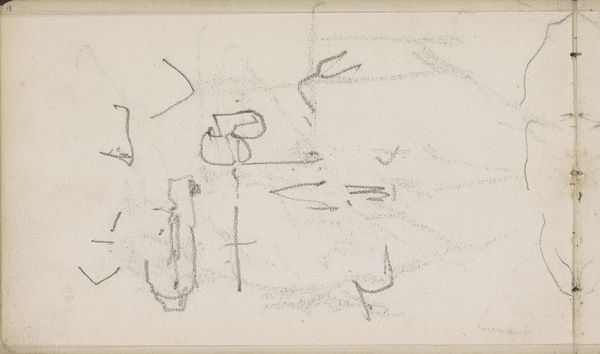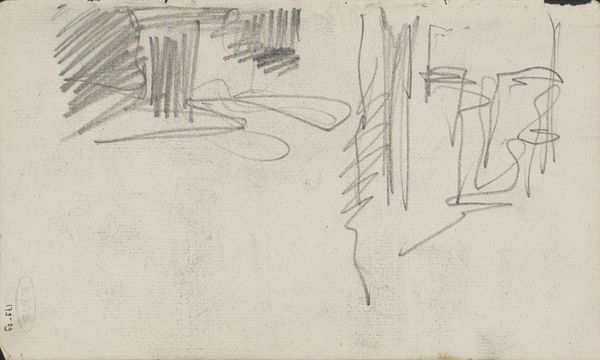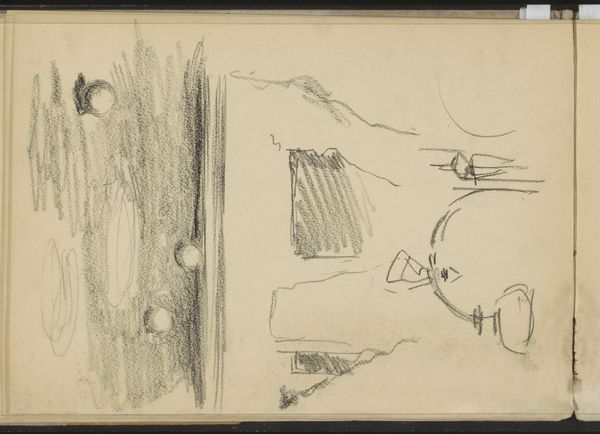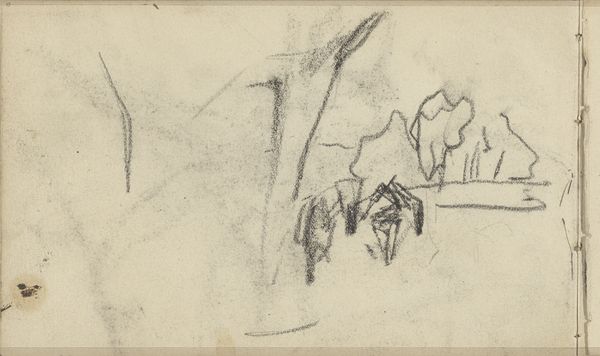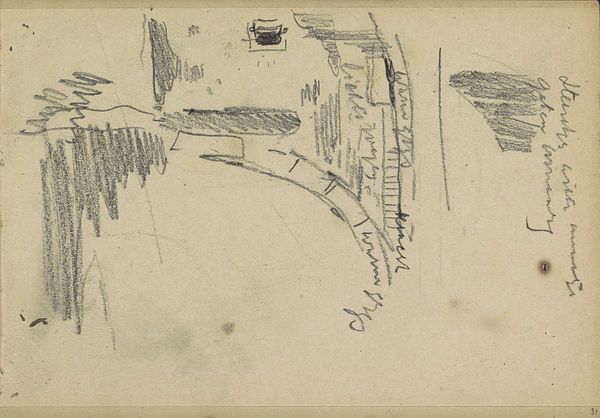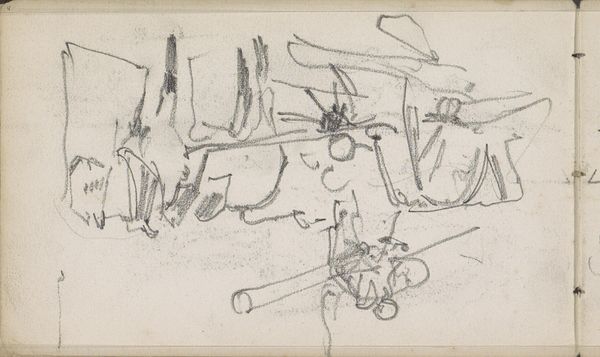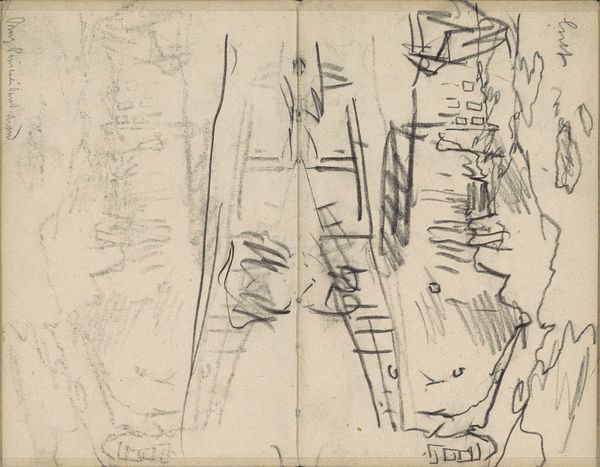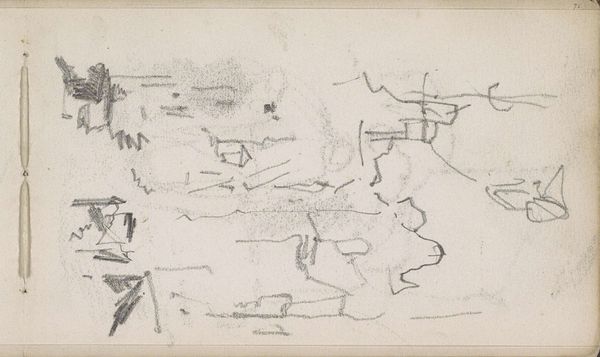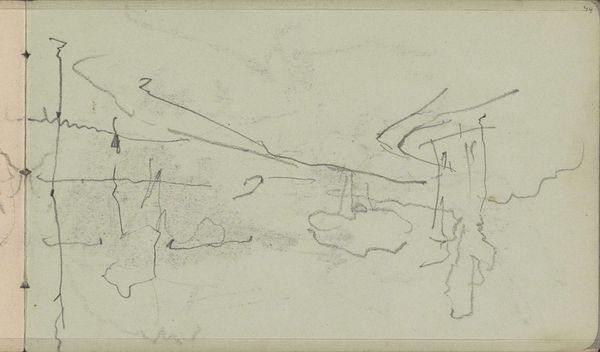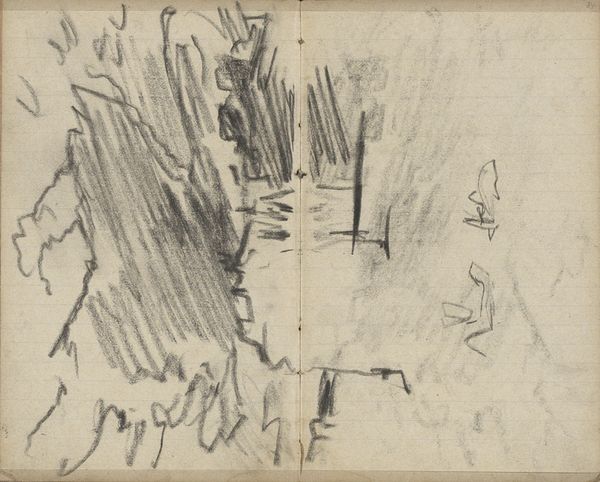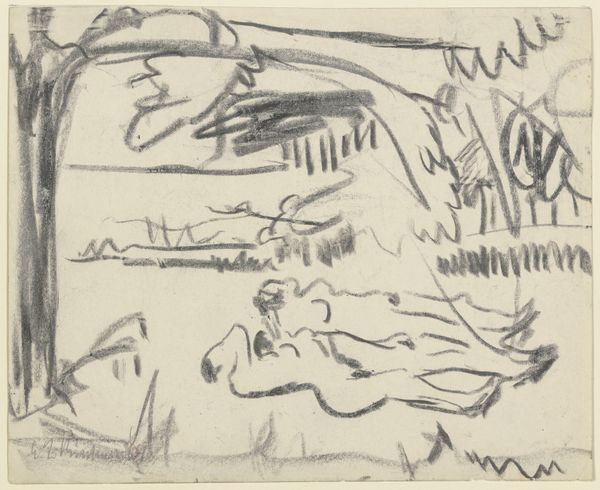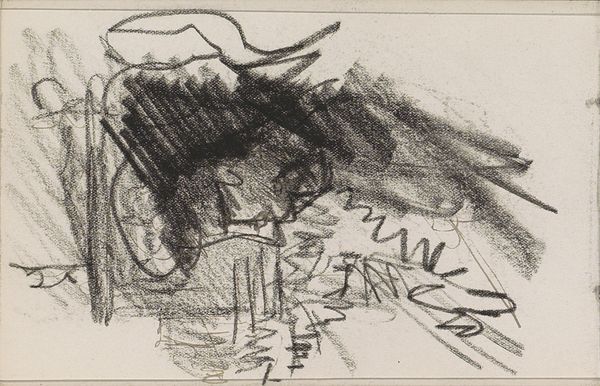
Copyright: Rijks Museum: Open Domain
Curator: Willem Witsen's "Veerpont op de Oude Schans te Amsterdam," created around 1897, presents us with a compelling look at Amsterdam through ink on paper. It's currently held in the Rijksmuseum's collection. What strikes you most about it initially? Editor: The hurried nature of the sketch immediately draws me in. There's a real sense of transience here – like the artist was trying to capture a fleeting moment, a vignette of daily life along the canal. Curator: Absolutely. Think about the late 19th century in Amsterdam. It was a time of great social and economic change. The canals were the lifeblood of the city. Consider the role of the ferry – a vessel transporting not only people but also goods and, by extension, class distinctions, as Amsterdam moved toward modernization. Editor: That emphasis on transport makes me think about the very specific materiality of ink on paper – accessible, portable. This wasn’t meant to be some grand, imposing statement, but a working sketch, possibly for something larger, a direct impression recorded at the site itself. What ink was available to him? Who produced the paper? What were the work conditions for laborers and the artist alike? Curator: Fascinating points. We should consider how the accessibility of such materials afforded artists a newfound freedom. They could detach from academic restrictions and immerse themselves directly in urban life, engaging with modern realities that previously may have been deemed unworthy subjects. It certainly underscores the intersection of art and democracy in representation. The rapid execution emphasizes his modernity. Editor: That speed of execution is fascinating when considering labor. He must have balanced expediency with intention to get these forms down so accurately with minimal medium. The ink application and economy of line becomes not just expressive, but essential. Curator: Considering the social politics embedded in seemingly simple scenes, one starts to see more. It is an activist stance in artistic interpretation by merely portraying such every-day scenery as meaningful and significant. Editor: Right, it makes you wonder about how the ease of transport of materials directly influences art-making at a specific cultural and historical moment. Curator: Indeed, it adds a deeper layer to our interpretation. This isn’t just a sketch of a ferry; it's a snapshot of a changing society, captured with an immediacy that only these materials allowed. Editor: Yes, reflecting on the processes and context helps to illuminate those complex relationships embedded within a seemingly straightforward impression.
Comments
No comments
Be the first to comment and join the conversation on the ultimate creative platform.

